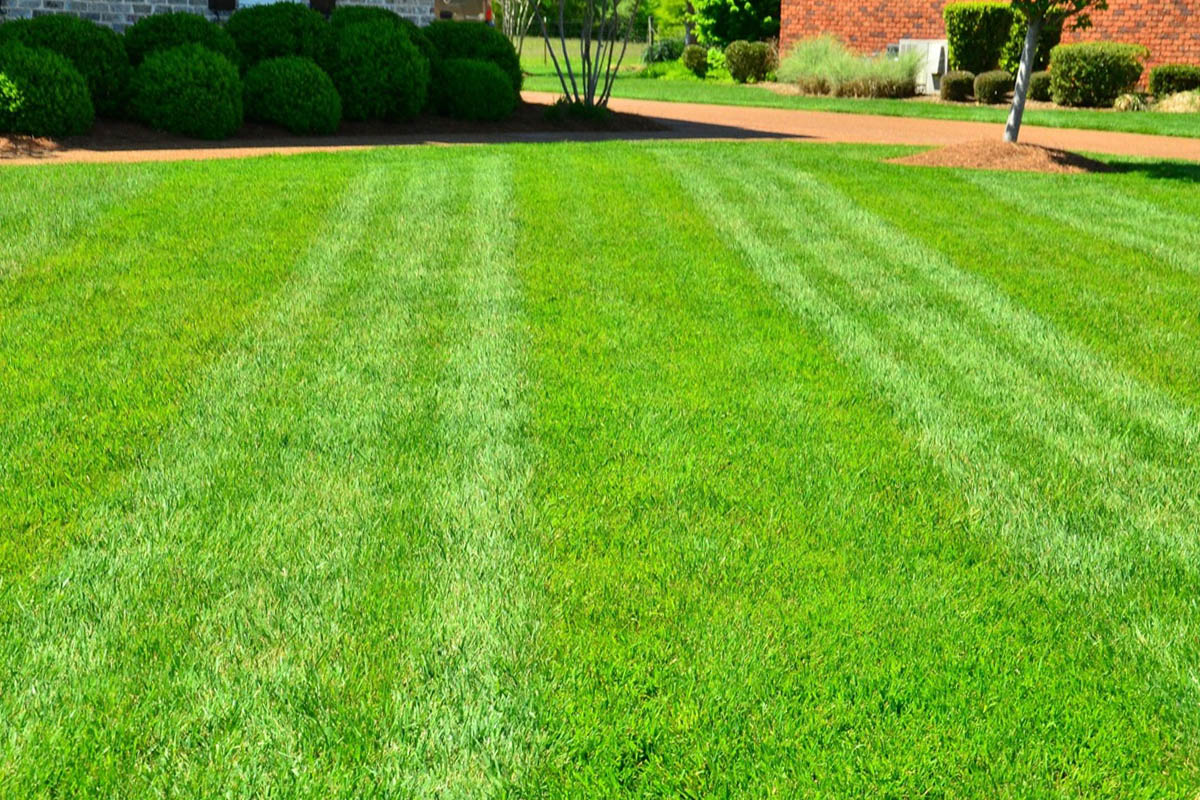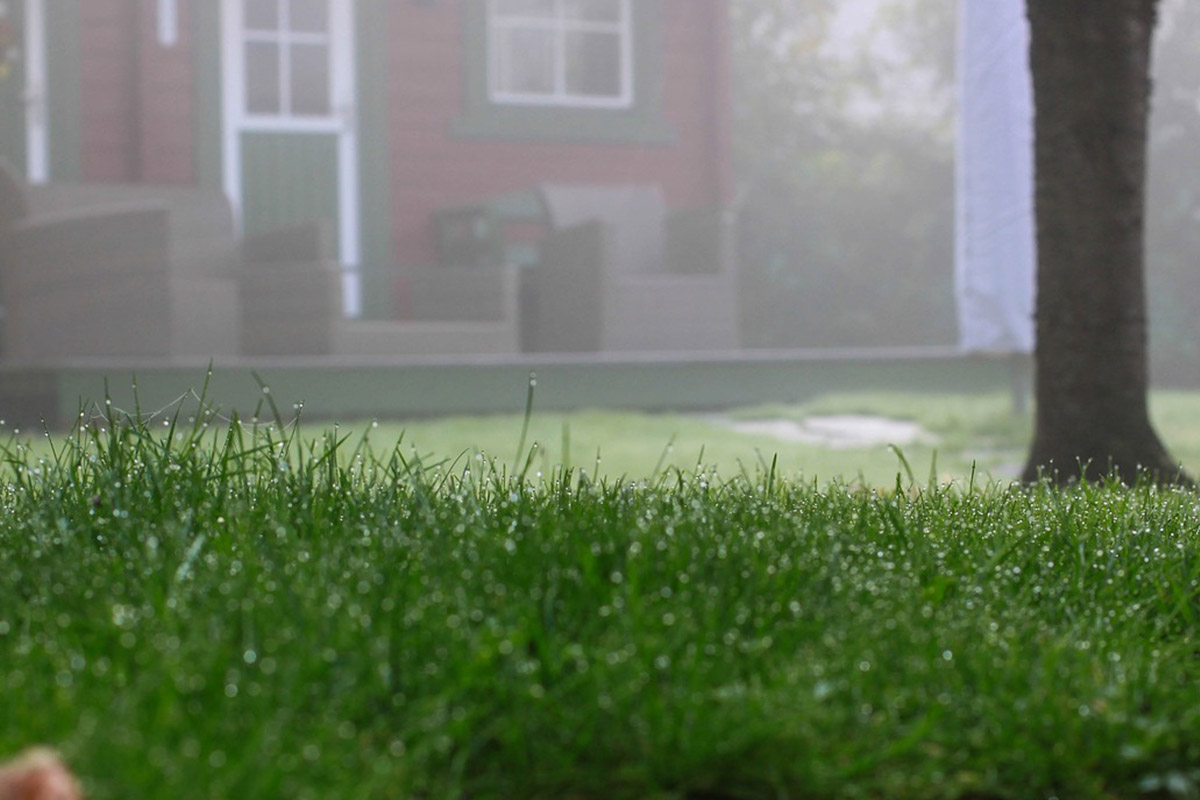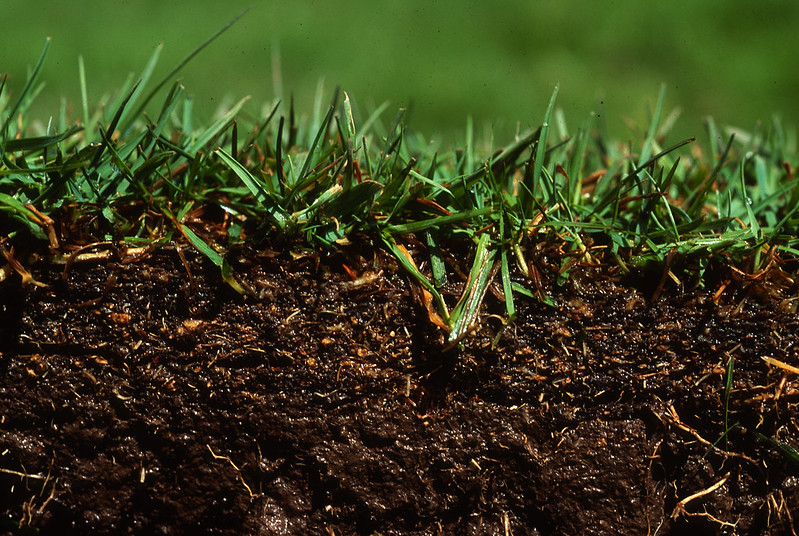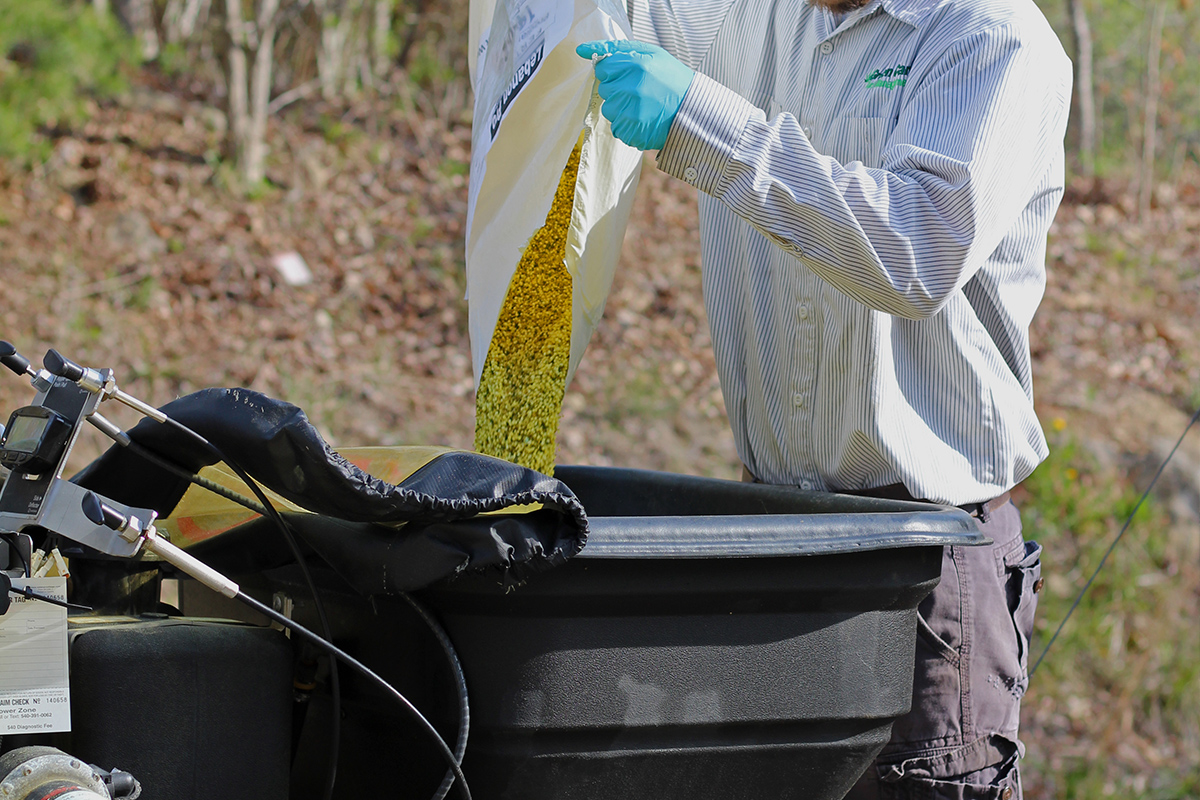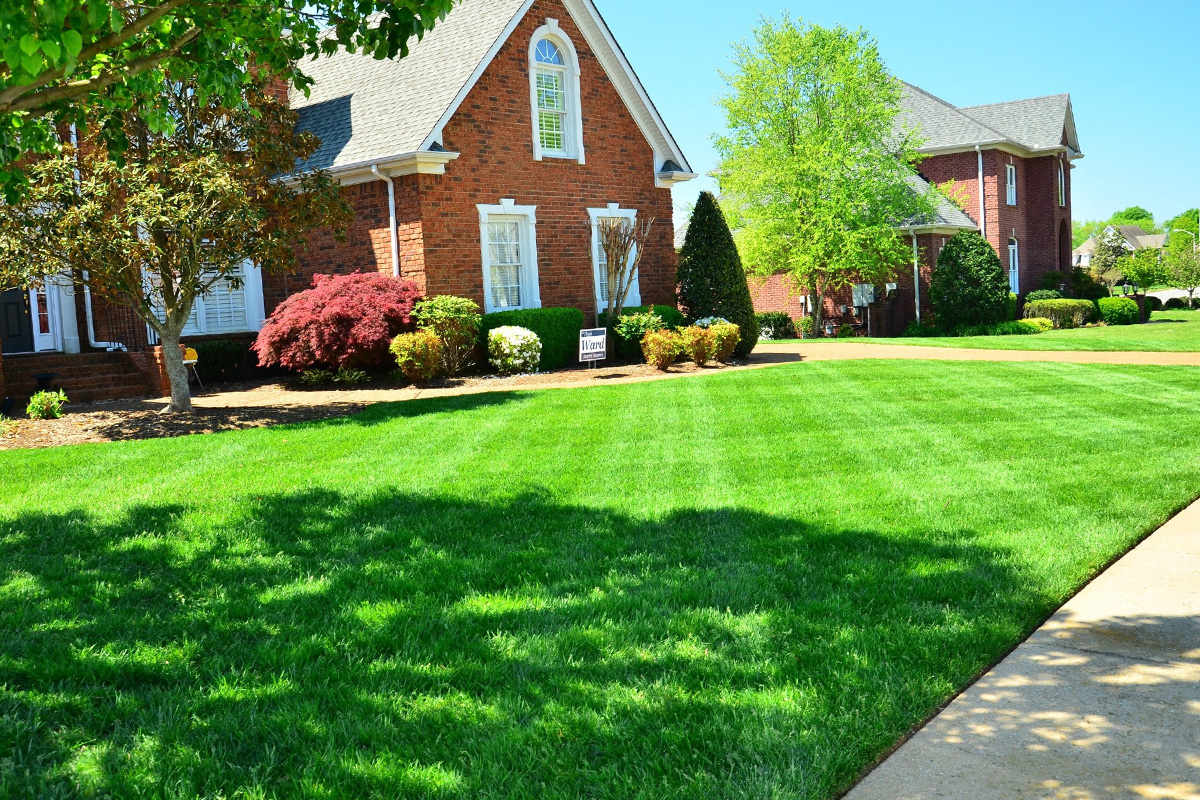It’s hard to believe that it’s almost back-to-school season! This busy time of year for many families is also a crucial season for caring for your lawn. The Green Care team will soon be tackling many important lawn care tasks for our clients. From N fertilizer and lime applications to core aerations, there is much to do in late summer and early fall to ensure the health of our clients’ turf here in the New River Valley.
We have talked a lot about the importance of core aeration. This process relieves compaction, opening up the soil to improve infiltration of water, fertilizer, and oxygen into the roots. We typically pair core aeration with another service called overseeding. We wanted to dive into that a little bit to explain why overseeding can be so important.
What is Overseeding?
Overseeding is the periodic addition of grass seed to an existing lawn. While it can be done without turning over the soil (you can overseed by simply putting seed directly on your grass), pairing it with a core aeration makes it more effective due to the seed to soil contact. The new seedlings root into the aeration holes, allowing for better growth.
Why Should I Overseed My Lawn?
Most homeowners consider overseeding when there are thin or bare spots in their lawns—be it from dry conditions, insects or disease, overuse, etc.— that they want to repair. This is a good reason to overseed; however there are other benefits to overseeding as well.
Overseeding improves and maintains turf density. This can prevent weeds, because a thick lawn is your best defense against weeds.
Overseeding can enhance the uniformity and color of your lawn’s appearance. It will give you a thicker, healthier looking lawn.
Overseeding can help your lawn better withstand tough conditions. Depending on your existing turf conditions and needs (age of turf, shade vs. sun, usage, etc.), overseeding new or different turfgrass varieties into your lawn may help it to better withstand elements such as insects, disease, drought, shade, and heavy traffic. Therefore, this overseeding could end up reducing the amount of fertilizer, water, and pesticides required to care for your lawn. If you’re unsure what kind of grass type you may be interested in, check out our blog post about how to select the right type of grass for your lawn. We’d also be happy to work with you to ensure that your grass type meets your overall goals.
When is the Best Time for Overseeding?
Because most lawns in the New River Valley consist of cool season grasses, fall is our preferred time of year for core aeration and overseeding. The soil is typically moist and warm enough for the aeration, but we don’t have to worry about spreading weed seeds in the process.
Fall is also the best time of year for seeding. By seeding in the fall, when cool season grasses still grow well and rainfall is usually still consistent, you’re giving the plants time to become established before winter. Their roots develop into late fall and early winter. Then spring arrives and their roots have even more time to mature before the hot days of summer hit. This gives your new grass its best chance to be mature enough to survive.
We hope we’ve convinced you of the importance of overseeding. If so, contact us today to get on our schedule for a core aeration and overseeding of your lawn!

